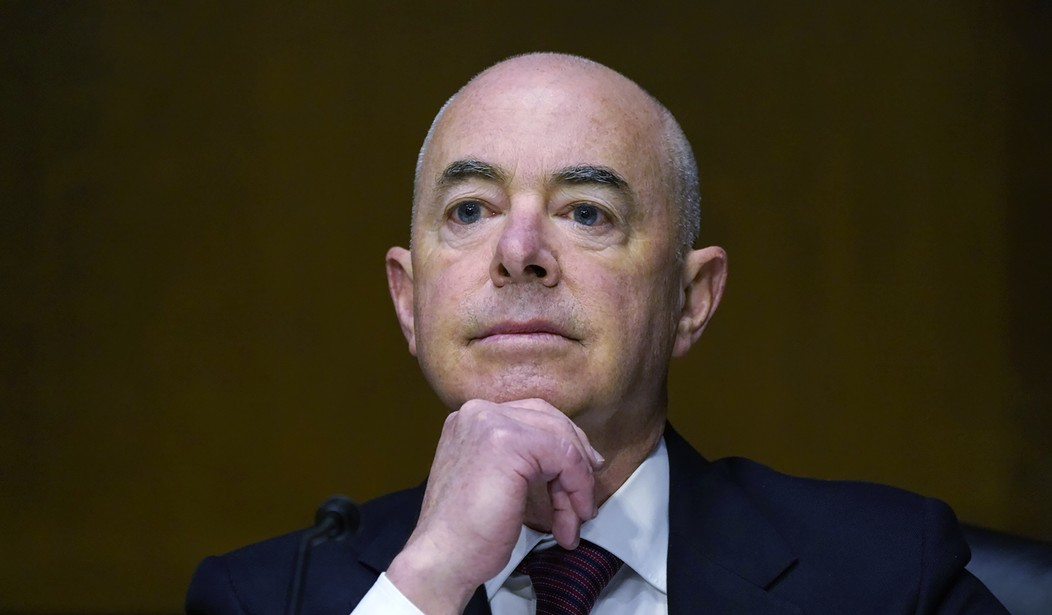During a hearing in April, Congressman Chip Roy (R-TX) asked Secretary of Homeland Security Alejandro Mayorkas whether his department (DHS) has operational control of the U.S. border with Mexico. Mayorkas answered, “Yes.” He was lying.
At a subsequent House Homeland Security Committee Field Hearing, then-U.S. Border Patrol (USBP) Chief Raul Ortiz, admitted – much more honestly than his boss, Secretary Mayorkas – that the U.S. does not, in fact, have operational control of the southern border.
That is significant cause for concern, because lack of control over our borders means that DHS has no idea how many terrorists, criminals, foreign intelligence operatives and human traffickers are flooding across the now imaginary line in the sand that separates the U.S. from Mexico and the rest of Latin America.
“Operational control” isn’t just meaningless government jargon. Congress defined the term in the Secure Fence Act of 2006 as, “the prevention of all unlawful entries into the United States, including entries by terrorists, other unlawful aliens, instruments of terrorism, narcotics, and other contraband.” It also directed DHS to establish operational control within 18 months of the statute’s enactment.
Naysayers have argued that Congress unrealistically mandated a sealed border, which no administration could achieve. However, this criticism is unfounded. On at least two occasions, the Border Patrol achieved something approximating the type of operational control described in the Secure Fence Act.
Recommended
In 1993, the El Paso Border Patrol Sector launched Operation Hold the Line. Border Patrol Agents assumed positions along the frontier with Mexico, in locations where they were visible to each other, as well as would-be border jumpers. Most illegal aliens abandoned their attempts to cross the border when faced with a solid line of law enforcement officers. The few who attempted to cross were simply arrested by the numerous USBP agents conducting roving patrols between the stationary front line positions. Once word got out amongst migrants, apprehensions of illegal aliens dropped by more than 70 percent and border crime also plummeted.
A similar effort, called Operation Gatekeeper, was launched in the Imperial Beach Sector in 1994. This time the Border Patrol deployed one tier of agents along the border in high-visibility locations. They were backed up by a second tier of roving patrols, and a third tier of agents stationed along common interior travel routes near the border. Initially, apprehensions increased as the human net of border patrolmen began snagging illegal aliens. However, just as with Operation Hold the Line, once word was out in migrant communities, the numbers dropped off once again.
One can only imagine how much more effective both Hold the Line and Gatekeeper would have been had they been extended along the entire U.S./Mexico border and backed up by properly constructed physical barriers. However, it wasn’t until the Trump Administration that any president made further efforts to comply with the Secure Fence Act and establish operational control of the border.
Under President Trump, the Department of Homeland Security installed 458 miles of 18-30 foot steel wall anchored in concrete. The vast majority of this replaced ineffective “pedestrian fencing” and vehicle barriers that had been erected in a token effort at thwarting individual border jumpers, but never served as a meaningful deterrent against drug smugglers and human traffickers.
According to a DHS report published on October 29, 2020, the Trump-era border wall system significantly reduced illegal border crossings. And while the Trump Administration didn’t manage to seal the border between lawful ports of entry, when its term expired, it was making giant strides toward establishing the type of border control contemplated by Congress in 2006.
To assess how effective Joe Biden and his truth-challenged minion Secretary Mayorkas have been in moving toward Congress’ border control mandate, one need only compare recent events to Hold the Line, Gatekeeper and Trump’s wall building efforts. About two weeks after Secretary Mayorkas glibly insisted that his DHS has maintained control of the border, a group of at least 1,000 migrants rushed the port-of-entry at the Paso Del Norte Bridge. Customs and Border Protection officers rapidly closed the bridge with Jersey barriers and razor wire. However, the news footage of the event doesn’t scream “an administration in control of the border.” It looks more like General Santa Ana’s Mexican army storming the Alamo.
At the end of May, following 30 years in law enforcement, USBP Chief Raul Ortiz retired. It is unclear whether Ortiz was forced out for disagreeing with his truth-challenged boss or whether the chaos along the border simply proved too much for a dedicated Border Patrol professional whose job was supposed to be securing America’s borders, not acting as the welcome committee for illegal aliens.
At present, it isn’t apparent what level of control the U.S. government is exercising over the southern frontier. But one thing is abundantly clear: if Alejandro Mayorkas thinks that thousands of aliens streaming over the line that separates our country from Mexico and demanding to be let into the United States constitutes operational control over the border, it is well past time for his removal.
American citizens should be demanding that their elected representatives impeach the incompetent Mayorkas and ensure that he is replaced with someone who takes both border control and national security seriously – Chief Ortiz might be a good candidate. Otherwise, it’s only a matter of time before a crowd of 10,000 or 100,000 aliens rushes CBP and the U.S. is facing a full-blown invasion of a type last witnessed by Roman centurions as the empire fell around them.
Matt O’Brien is the director investigations at the Immigration Reform Law Institute and the co-host of IRLI’s podcast “No Border, No Country.” Immediately prior to working for IRLI he served as an immigration judge. He has nearly 30 years of experience in immigration law and policy, having held numerous positions within the Department of Homeland Security.



















Join the conversation as a VIP Member